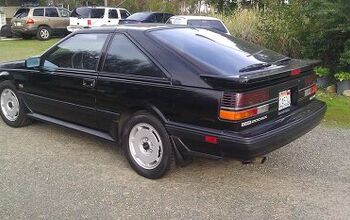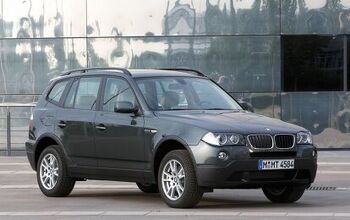Let There Be Light. Weight

When I was a kid copywriter on the Volkswagen account, grumpy but thorough VW engineers drummed one tenet of green into me: You don’t save gas with secret carburetors which the oil companies hide. You save by shedding weight. The less weight to push around, the less energy is needed to do the pushing. From the First Law of Thermodynamics to Einstein, all will agree. Like we agree on the need for a balanced diet. Then we go to the next Wendy’s, and order a triple Whopper. Despite the wisdom, cars tend to gain heft over the years like an erstwhile skinny Italian bella ragazza after the age of 30.
With tougher environmental regulations spreading across the globe, and CO2 mutating into a climate-ogre from something that used to provide the fizz in a soda, automakers remember the old engineering rule: Less weight, less gas, less crud.
The challenge is to build cars light and safe at the same time. It can be done. But it’s tricky. Building cars that dissipate energy during a crash is one part. Using lightweight, but strong materials is another.
“The ability of automakers to incorporate lightweight materials into their vehicles will go a long way toward determining their global competitiveness,” The Nikkei [sub] says.
Japan’s Toray entered a joint venture with Daimler to develop carbon fiber parts.
Toyota plans to introduce several new materials for its Lexus LFA sports car, slated to be ready to buy by the end of the year. Small windows will be from polycarbonate, 30 percent lighter than glass. The LFA will use carbon fiber inside and out.
Nissan has adopted aluminum alloys for the doors and roofs of its sports cars.
BMW AG joined up with SGL Automotive Carbon Fibers to produce carbon-fiber-reinforced plastic in the U.S.
Volkswagen is increasingly using aluminum for its luxury brands, such as Audi and Porsche.
However, shedding that heft comes at a hefty price. Literally. The new lightweight materials don’t come cheap. Nobody knows that better than Volkswagen. More than 10 years ago, in 1999, they launched the Lupo 3L, which had its name from the fact that it used only 3 liters of gas for 100 km. Which comes out to 78.4 mpg. (U.S. gallons, not the imperial stuff.) The car used light-weight aluminum and magnesium alloys and weighed-in at only 1,830 lb. Market research showed that the car would fly off the lot. Then it just stood there. It did not move. It was too expensive. For the same price, people got a bigger car with more oomph. The Lupo 3L was quickly buried. Critics said it was a green washing experiment. It wasn’t. They honestly meant it. But they overlooked another immutable law in the auto business: People love to save the planet when asked by a researcher. People love to get the best bang for the buck when it comes to buying.

Bertel Schmitt comes back to journalism after taking a 35 year break in advertising and marketing. He ran and owned advertising agencies in Duesseldorf, Germany, and New York City. Volkswagen A.G. was Bertel's most important corporate account. Schmitt's advertising and marketing career touched many corners of the industry with a special focus on automotive products and services. Since 2004, he lives in Japan and China with his wife <a href="http://www.tomokoandbertel.com"> Tomoko </a>. Bertel Schmitt is a founding board member of the <a href="http://www.offshoresuperseries.com"> Offshore Super Series </a>, an American offshore powerboat racing organization. He is co-owner of the racing team Typhoon.
More by Bertel Schmitt
Latest Car Reviews
Read moreLatest Product Reviews
Read moreRecent Comments
- SCE to AUX Range only matters if you need more of it - just like towing capacity in trucks.I have a short-range EV and still manage to put 1000 miles/month on it, because the car is perfectly suited to my use case.There is no such thing as one-size-fits all with vehicles.
- Doug brockman There will be many many people living in apartments without dedicated charging facilities in future who will need personal vehicles to get to work and school and for whom mass transit will be an annoying inconvenience
- Jeff Self driving cars are not ready for prime time.
- Lichtronamo Watch as the non-us based automakers shift more production to Mexico in the future.
- 28-Cars-Later " Electrek recently dug around in Tesla’s online parts catalog and found that the windshield costs a whopping $1,900 to replace.To be fair, that’s around what a Mercedes S-Class or Rivian windshield costs, but the Tesla’s glass is unique because of its shape. It’s also worth noting that most insurance plans have glass replacement options that can make the repair a low- or zero-cost issue. "Now I understand why my insurance is so high despite no claims for years and about 7,500 annual miles between three cars.


































Comments
Join the conversation
+1 for Adamatari. Making an already economical car more economical might expand its appeal, but won't shake up the marketplace much. The Prius isn't a very big car, by the way, but it's big enough and distinctive enough to hit its audience targets. GM definitely was thinking this way when it gave the Volt styling different from the Cruze. Just like cars here, European cars have gotten bigger over time as well. Crowded cities and heavily taxed fuel will always keep them in smaller cars, but when you can get the same fuel economy out of a Mondeo you could out of a 20-year-old Fiesta, you start thinking Mondeo. Better gas and way better diesel engines make this possible.
GM is the worst offender in the product restyles. The new LaCrosse is a perfect example. 500 Lbs heavier than the outgoing model with a smaller trunk, worse mileage and around town performance on base models and more confining front seat width. The previous model was basically just as quiet and refined so not much of the huge weight gain went into sound deadening materials. The new one gets one more star for safety so that was one area that did improve but I feel that a 100 LB gain would have been sufficient.